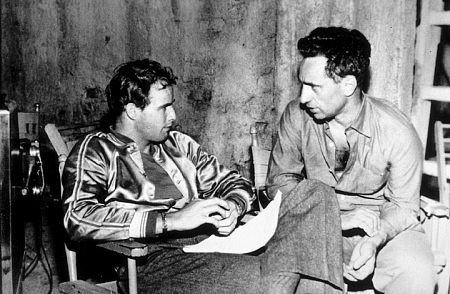Screenwriting gurus Robert McKee and Linda Seger have made much of the concept known as the "spine" of the story in their seminars and writings, variously likening it to a simple logline, or in McKee's words, the critical "deep desire and effort by the protagonist to restore the balance of life."
The term and concept of the "spine," however, did not originate with either of those gurus, but with the legendary director Elia Kazan, known primarily for "A Streetcar Named Desire," "On the Waterfront," "Death of a Salesman," "Cat on a Hot Tin Roof," and others.
Although Kazan was known for his skills as a director, not a writer, he defined the spine in a far better and more profound manner than those modern gurus have. To be fair, the concept may have not originated with him, but with his renowned mentors, Lee Strasberg and Harold Clurman, or with Konstantin Stanislavsky (known as the founder of the Method). Whatever the case, Kazan's voluminous notes, kept throughout the years, elucidate the concept in great detail, perhaps in a better and clearer manner than any who came before or after him. They have thankfully been transcribed and reprinted in the book Kazan on Directing (New York: Vintage Books, 2009).
To quote from his notes:
The [director's] first job is to find a "center" or "core" for the work and for the production. The more integrated this center is, the more integrated will be the production. Once it is established, the base direction has been made. All else devolves from this...Kazan provides the following examples of spines from his and others' productions:
The study of the script should result in a simple formulation that sums up the play in one phrase, a phrase that will be a guide for everything the director does. He begins with the simple words: "For me, this play is about..." The phrase should delineate the essence of the action that transpires on the stage [or film], it should reflect what is happening, what the characters are doing. It must imply effort, progression, transition, MOVEMENT. The concept must suggest not only the events, but the [film's] mood and color, its emotional landscape and form. It is to serve as the key for the production, what will give it unity...
"Search for happiness among petty objects"Some of my own spines for some popular Hollywood movies:
"Fight for achievement"
"To live with honor"
The Matrix - "Discover the true nature of reality"
Unforgiven - "Justify the use of violence"
Saving Private Ryan - "Find humanity in war"
The Exorcist - "Save innocence from darkest evil"
Spiderman 1, 2 & 3 - "Overcome the burdens of being a hero"
Titanic - "Fight for love against all human and natural forces"
 In a future posting, we'll look at the spines of additional popular films and how that spine has informed the stories of those films.
In a future posting, we'll look at the spines of additional popular films and how that spine has informed the stories of those films.

Great post. Keep these coming!
ReplyDeleteThis is fantastic. Gives a great perspective on story.
ReplyDelete